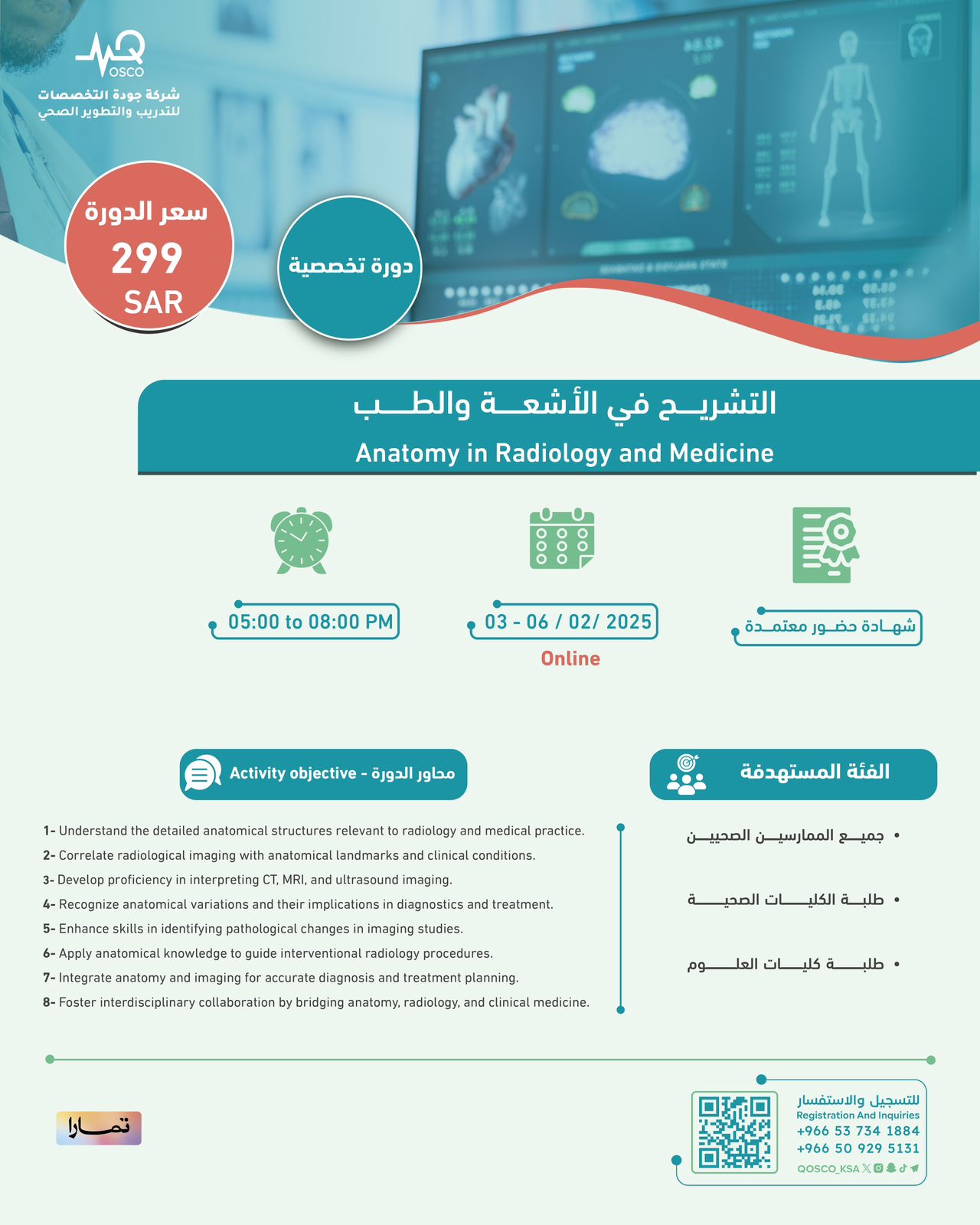التشريح فى الأشعة والطب - 2️⃣

تفاصيل الدورة
-
ما سوف تتعلم فى هذه الدورة
1-Understand the detailed anatomical structures relevant to radiology and medical practice.
2-Correlate radiological imaging with anatomical landmarks and clinical conditions.
3-Develop proficiency in interpreting CT, MRI, and ultrasound imaging.
4-Recognize anatomical variations and their implications in diagnostics and treatment.
5-Enhance skills in identifying pathological changes in imaging studies.
6-Apply anatomical knowledge to guide interventional radiology procedures.
7-Integrate anatomy and imaging for accurate diagnosis and treatment planning.
8-Foster interdisciplinary collaboration by bridging anatomy, radiology, and clinical medicine.
عن الدورة
- التصنيف دورات أونلاين ( تخصصية ) معتمدة من شركة جودة التخصصات بشهادة حضور
- السعر 299 ريال سعودى
- اللغة العربية - الانجليزية
- المدة4 ايام
- شهادة اتمام الدورة